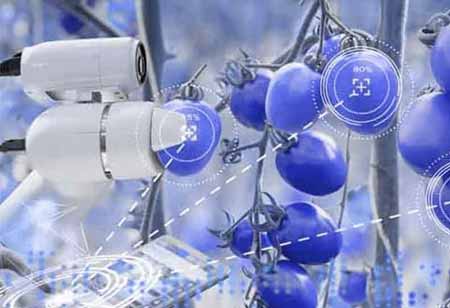Thank you for Subscribing to Agri Business Review Weekly Brief
Dependence of Agriculture Sector IoT
Agriculture's application of IoT was similar to a second wave of the Green Revolution.

By
Agri Business Review | Tuesday, March 15, 2022
Stay ahead of the industry with exclusive feature stories on the top companies, expert insights and the latest news delivered straight to your inbox. Subscribe today.
Various technologies like AI(Artificial Intelligence), ML(Machine Learning), the IoT(Internet of Things), and Deep Learning make humans get their work done easily.
FREMONT, CA: Agriculture's application of IoT was similar to a second wave of the Green Revolution. Not only does IoT-based smart farming help in modernizing conventional farming methods, but it also aims for alternative agriculture tactics such as organic farming, family farming (complex or small spaces, unique cattle or cultures, preservation of rare or high-quality varieties, and so on), and upgrades highly transparent agriculture.
Smart farming enabled by IoT also helps the environment. For example, it can guide farmers to make more efficient water use and optimize inputs and treatments.
Below are the key uses of IoT-enabled smart farming that are upgrading the agriculture sector
Precision Agriculture
Precision farming also referred to as precision agriculture, is anything that makes farming more accurate and controlled, especially when it comes to nurturing livestock and growing crops.
The difficult component of this farming technique is incorporating information technology and various other technologies, including sensors, robots, automated vehicles, control systems, automated hardware, and variable rate technology.
Manufacturers utilize mobile devices, high-speed internet, and reliable, low-cost satellites (for images and positioning), which defines Precision farming.
Precision farming is one of the common IoT applications in the agriculture sector, with several businesses influencing it globally.
Drones for Agriculture
In the last few years, technology has grown dramatically and faster. Agricultural drones are a brilliant illustration of this trend. Drones are being utilized in agriculture to improve a variety of farming operations.
Drones, both ground-based and aerial-based, are utilized in agriculture for crop health evaluation, crop monitoring, pesticide spraying, irrigation, planting, and field analysis. These drones acquire multispectral, thermal, and visual imagery during their flight.
Drones have several benefits, involving crop health imaging, integrated GIS mapping, time savings, ease of usage, and increased agricultural yields. Integrating drone technology with sound strategy and planning based on real-time data can convert agriculture into a high-tech industry.
Farmers can derive perceptions about plant health indices, plant counting and yield prediction, plant height measurement, canopy cover mapping, field water ponding mapping, scouting reports, stockpile measurement, chlorophyll measurement, nitrogen content in wheat, drainage mapping, and weed pressure mapping, among other things, from the data gathered by drones.
Monitoring of Livestock
Large farm owners utilize wireless IoT applications to monitor their cattle's whereabouts, health, and well-being. This information makes them identify sick animals and, in the future, segregate them from the herd, care for them, and also assist control disease spread among other animals. Additionally, it helps owners save money on labor expenditures by allowing them to locate their cattle using IoT-based sensors.





